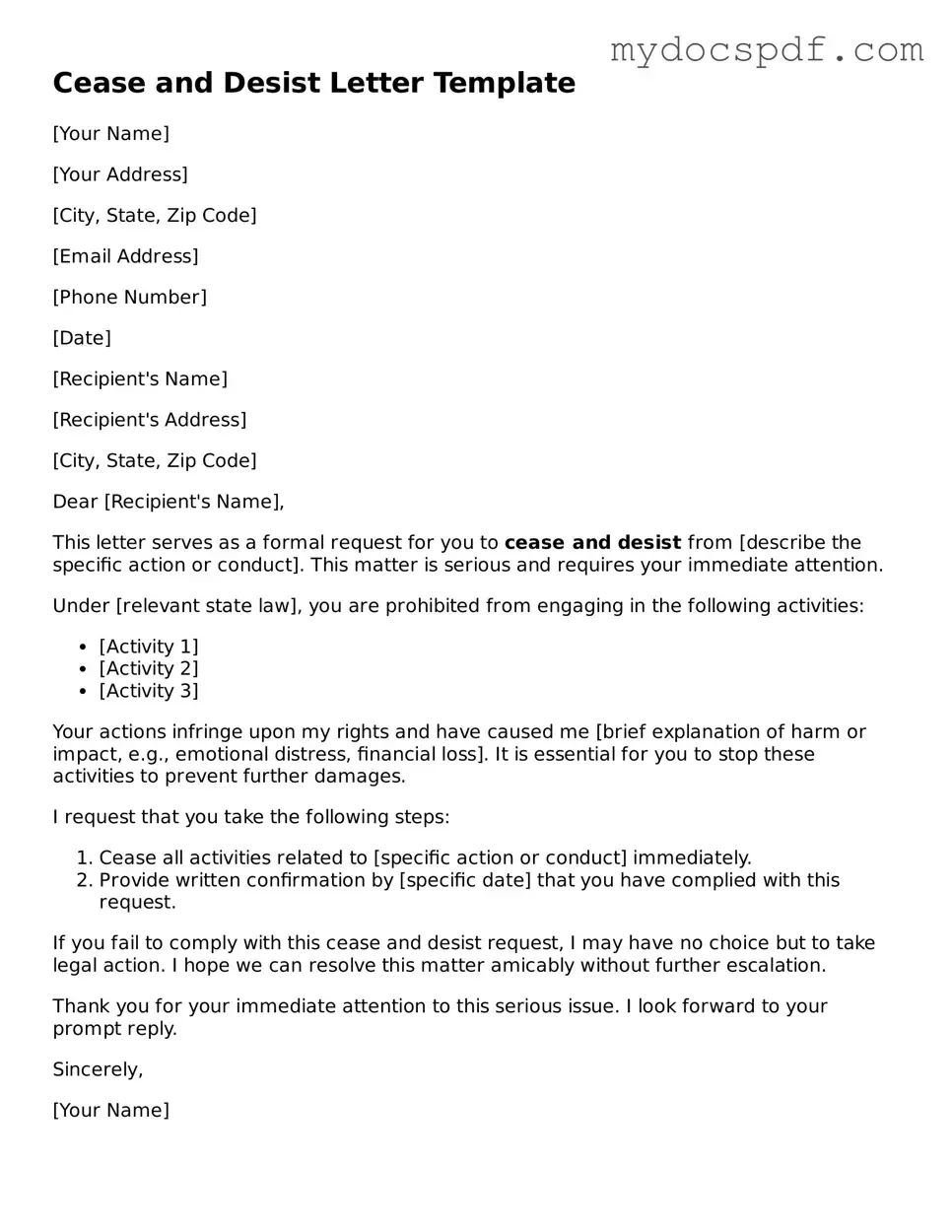Cease and Desist Letter Template
[Your Name]
[Your Address]
[City, State, Zip Code]
[Email Address]
[Phone Number]
[Date]
[Recipient's Name]
[Recipient's Address]
[City, State, Zip Code]
Dear [Recipient's Name],
This letter serves as a formal request for you to cease and desist from [describe the specific action or conduct]. This matter is serious and requires your immediate attention.
Under [relevant state law], you are prohibited from engaging in the following activities:
- [Activity 1]
- [Activity 2]
- [Activity 3]
Your actions infringe upon my rights and have caused me [brief explanation of harm or impact, e.g., emotional distress, financial loss]. It is essential for you to stop these activities to prevent further damages.
I request that you take the following steps:
- Cease all activities related to [specific action or conduct] immediately.
- Provide written confirmation by [specific date] that you have complied with this request.
If you fail to comply with this cease and desist request, I may have no choice but to take legal action. I hope we can resolve this matter amicably without further escalation.
Thank you for your immediate attention to this serious issue. I look forward to your prompt reply.
Sincerely,
[Your Name]
